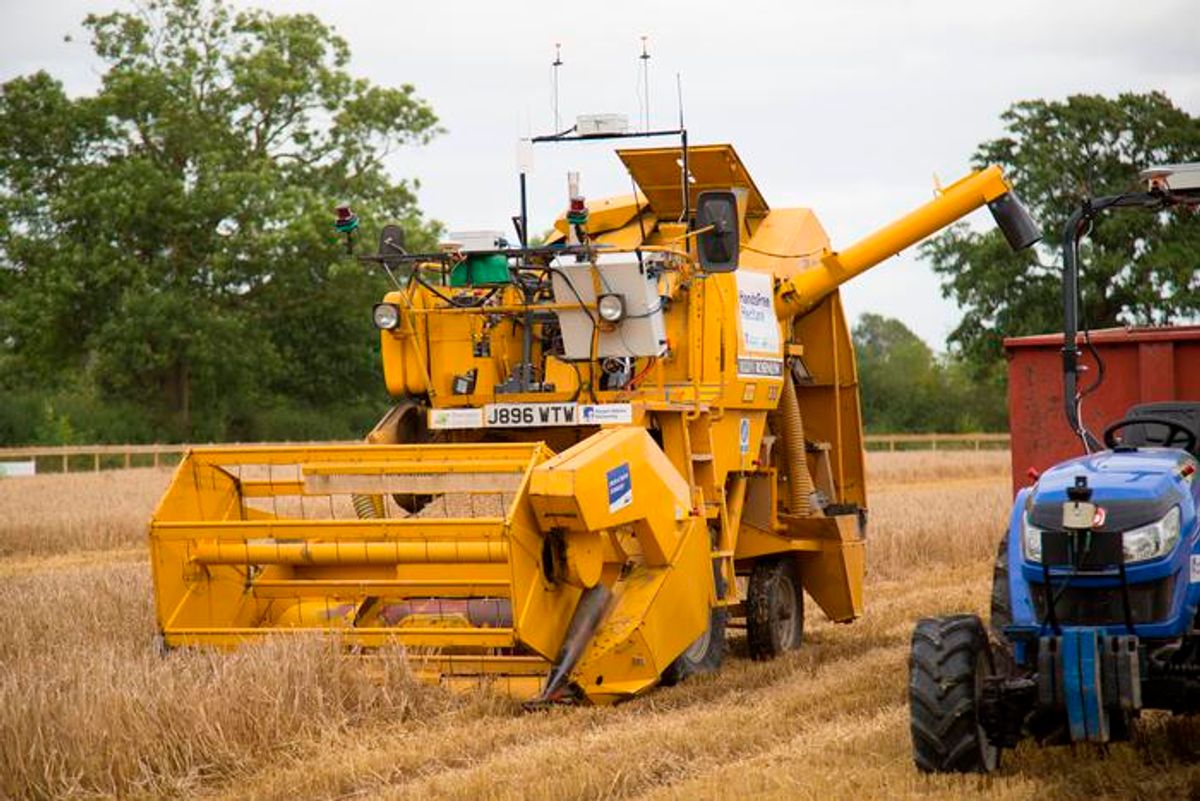Agriculture is no stranger to autonomy. Tractors were among the first commercial autonomous vehicles, and there’s a huge market for drones packed with sensors that can help farmers make more informed decisions. The problem, though, is that farming is still work for humans. There’s still dirt, early mornings, dirt, more dirt, and a lot of hard work that involves some extra dirt. All this dirty-ness makes farming an ideal target for robots, especially since farms also offer repetitive tasks in a semi-constrained environment. At Harper Adams University, they’re taking the farm autonomy idea very seriously: Seriously enough that they’ve managed to plant, tend, and harvest an acre and a half of barley using only autonomous vehicles and drones.
During the Hands Free Hectare project, no human set foot on the field between planting and harvest—everything was done by robots. This includes:
- Drilling channels in the dirt for barley seeds to be planted at specific depths and intervals with an autonomous tractor;
- Spraying a series of fungicides, herbicides, and fertilizers when and where necessary;
- Harvesting the barley with an autonomous combine.
Modern farming is much more complicated than just dropping some seeds on the ground and then coming back later for tasty food; the amount and composition of the pesticides and herbicides and fertilizers, and even the timing of the final harvest, depends on a data-driven understanding of the state of the crop. To make these decisions, robot scouts (including drones and ground robots) surveyed the field from time to time, sending back measurements and bringing back samples for humans to have a look at from the comfort of someplace warm and dry and clean.
The automated harvest took place just a few days ago, after samples confirmed that the barley was dry enough. This video shows the first test cut, and the entire harvest took about six hours:
Overall, the field produced 4.5 metric tons per hectare, which is significantly less than the average of 6.8 metric tons per hectare that you could expect from conventional (human-intensive) farming methods. The students involved in the Hands Free Hectare project also suggest that this was probably “the most expensive hectare of barley ever,” with an overall budget of £200,000 from the U.K. government. Moonshots like this are understandably expensive, though, and since a huge chunk of that money went to capital costs (like buying a tractor and a harvester), the next crop will be vastly cheaper.
While it’s possible that at some point there might be significant labor savings by fully automating farming like this, there are lots of other, more immediate benefits. With fully autonomous farm vehicles, you can use a bunch of smaller ones much more effectively than a few larger ones, which is what the trend has been toward if you need a human sitting in the driver’s seat. This means higher precision, minimal soil compaction, cost savings, and increased flexibility to deal with mechanical breakdowns. Without the need for daylight, you could also keep a farm active 24/7 with a very small human workforce just there (or even checking in remotely) in a supervisory capacity.
Robots are only going to get more affordable and efficient at this sort of thing, and our guess is that it won’t be long before fully autonomous farming passes conventional farming methods in both overall output and sustainability. Small mobile robots or distributed sensor systems could constantly monitor crops in a way that would be impractical for human workers, feeding data into a system that could provide (for example) plant-by-plant recommendations for chemical treatments that a location aware spraying system could then dispense. And with robots like DeepField’s weed-puncher and even Tertill ready to help out as much as they can, person-free precision farming seems like an increasingly viable way to help keep the world fed.
The Hands Free Hectare team is already looking forward to their next winter crop, and in the meantime, they are (of course) taking all of that spring barley and turning it into a Hands Free Hectare beer.
Evan Ackerman is a senior editor at IEEE Spectrum. Since 2007, he has written over 6,000 articles on robotics and technology. He has a degree in Martian geology and is excellent at playing bagpipes.



